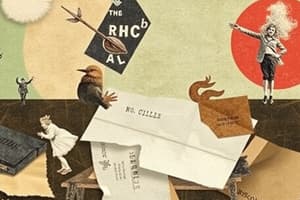Podcast
Questions and Answers
What is the primary purpose of the screening process in paper recycling?
What is the primary purpose of the screening process in paper recycling?
- To remove contaminants like glue, staples, and plastic (correct)
- To remove ink and other impurities from the pulp
- To separate paper by type and grade
- To break down the paper into a mushy consistency
Which of the following types of paper is NOT typically recyclable?
Which of the following types of paper is NOT typically recyclable?
- Glass containers (correct)
- Paperboard
- Magazines
- Tissue products
What is the percentage of energy saved by recycling paper compared to producing new paper?
What is the percentage of energy saved by recycling paper compared to producing new paper?
- 75%
- 50%
- 64% (correct)
- 90%
What is the primary benefit of recycling paper in terms of natural resources?
What is the primary benefit of recycling paper in terms of natural resources?
What is the purpose of the refining process in paper recycling?
What is the purpose of the refining process in paper recycling?
What is the recommended step before recycling paper products?
What is the recommended step before recycling paper products?
What is the percentage of water saved by recycling paper compared to producing new paper?
What is the percentage of water saved by recycling paper compared to producing new paper?
What is the primary purpose of the forming process in paper recycling?
What is the primary purpose of the forming process in paper recycling?
Study Notes
Recycling Process
- Collection: Used paper is collected from households, offices, and community recycling centers.
- Sorting: Collected paper is sorted based on its type, grade, and condition.
- Baling: Sorted paper is compressed into large bundles called bales.
- Transportation: Bales are transported to paper mills for processing.
- Pulping: Bales are broken down into a mushy consistency called pulp.
- Screening: Pulp is passed through screens to remove contaminants like glue, staples, and plastic.
- Cleaning: Pulp is cleaned and de-inked to remove dirt, ink, and other impurities.
- Refining: Pulp is refined to create a consistent texture.
- Forming: Refined pulp is formed into a paper sheet.
- Pressing: Water is pressed out of the paper sheet.
- Drying: Paper sheet is dried and cut to size.
Benefits of Recycling Paper
- Conserves Natural Resources: Recycling paper saves trees, water, and energy.
- Reduces Waste: Recycling paper reduces the amount of waste sent to landfills.
- Saves Energy: Recycling paper uses 64% less energy than producing new paper.
- Reduces Pollution: Recycling paper reduces air and water pollution associated with paper production.
- Saves Water: Recycling paper uses 58% less water than producing new paper.
Types of Paper That Can Be Recycled
- Newspaper
- Cardboard
- Magazines
- Junk mail
- Office paper
- Cartons
- Paperboard
- Tissue products
Tips for Recycling Paper
- Remove plastic inserts and staples
- Flatten cardboard and cartons
- Keep paper products separate from other recyclables
- Rinse and remove food residue from paper products
- Shred paper securely before recycling
Recycling Process
- Collection is the first step in recycling paper, where used paper is gathered from households, offices, and community recycling centers.
- Sorting is done based on paper type, grade, and condition.
- Baling involves compressing sorted paper into large bundles called bales.
- Transportation involves moving bales to paper mills for processing.
- Pulping is the process of breaking down bales into a mushy consistency called pulp.
- Screening removes contaminants like glue, staples, and plastic from the pulp.
- Cleaning removes dirt, ink, and other impurities from the pulp.
- Refining ensures a consistent texture of the pulp.
- Forming involves creating a paper sheet from the refined pulp.
- Pressing removes water from the paper sheet.
- Drying and cutting the paper sheet to size completes the recycling process.
Benefits of Recycling Paper
- Recycling paper conserves natural resources like trees, water, and energy.
- It reduces waste sent to landfills.
- Recycling paper uses 64% less energy than producing new paper.
- It reduces air and water pollution associated with paper production.
- Recycling paper uses 58% less water than producing new paper.
Types of Paper That Can Be Recycled
- Newspaper
- Cardboard
- Magazines
- Junk mail
- Office paper
- Cartons
- Paperboard
- Tissue products
Tips for Recycling Paper
- Remove plastic inserts and staples from paper products.
- Flatten cardboard and cartons before recycling.
- Keep paper products separate from other recyclables.
- Rinse and remove food residue from paper products.
- Shred paper securely before recycling it.
Studying That Suits You
Use AI to generate personalized quizzes and flashcards to suit your learning preferences.
Description
Learn about the steps involved in recycling paper, from collection and sorting to pulping and screening. Understand how paper is transformed from waste to a reusable product.



